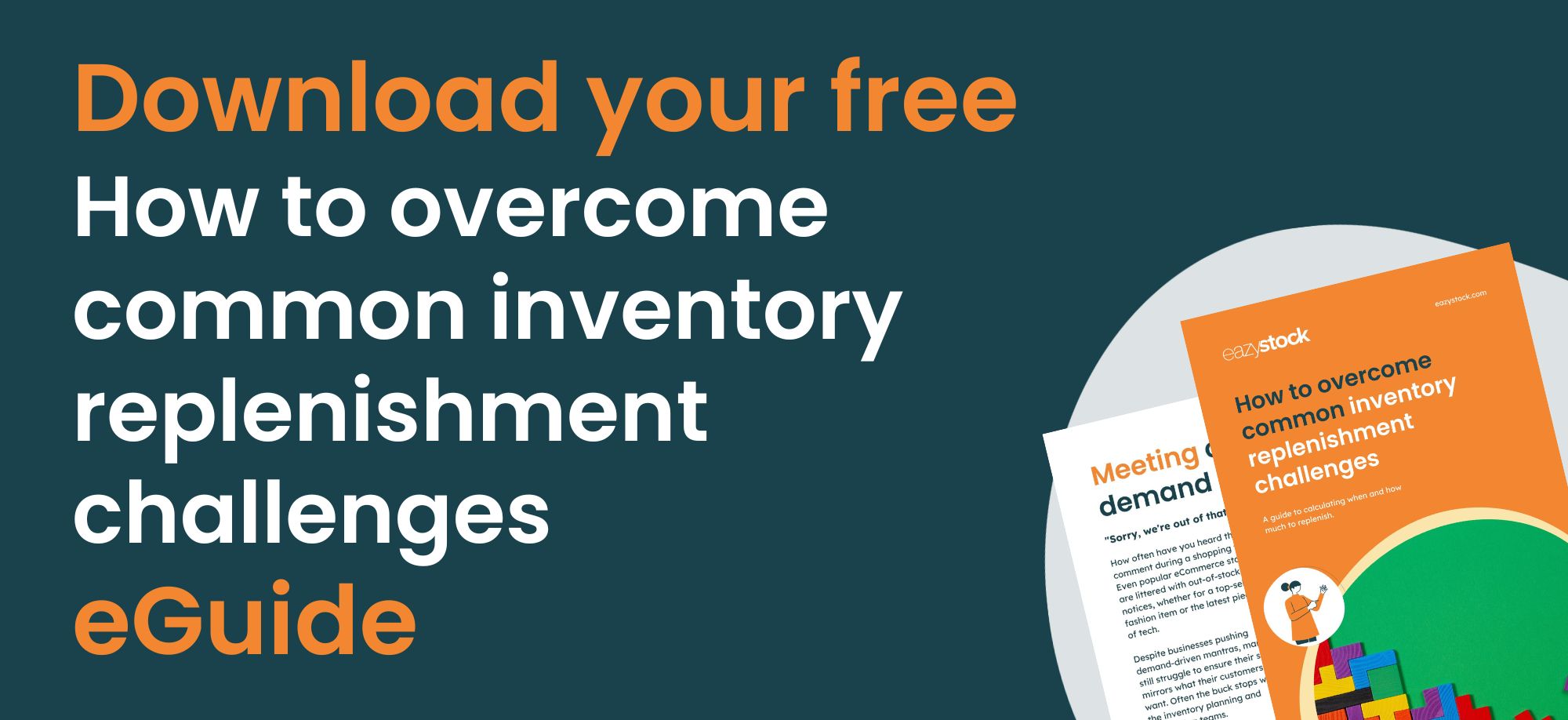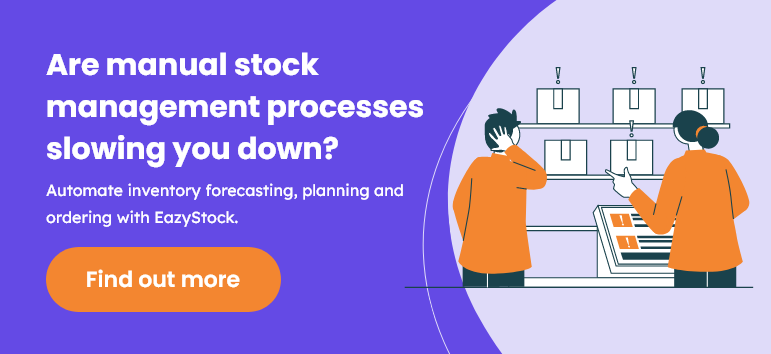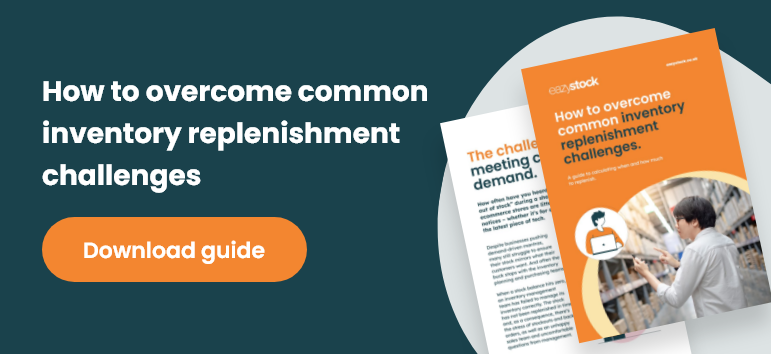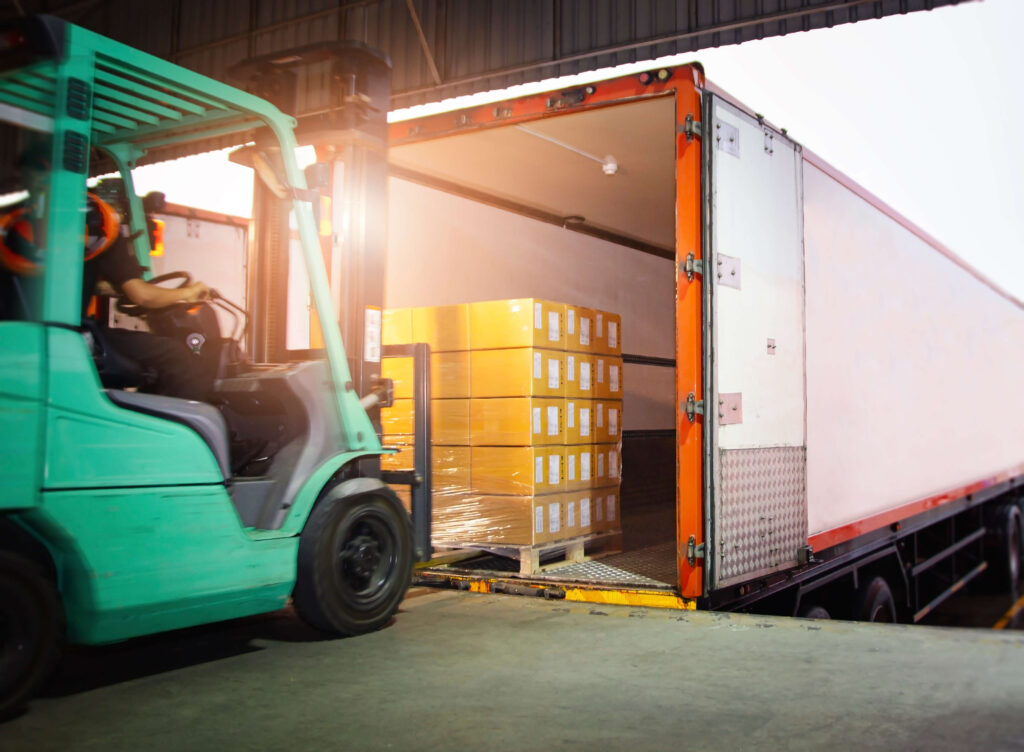Inventory replenishment best practice to increase profits
What is inventory replenishment?
Inventory replenishment (stock replenishment) is the process of moving stock items along the supply chain to ensure inventory levels are sufficient to cover demand. Effective inventory replenishment ensures that order fill rates can be achieved whilst keeping inventory carrying costs under control.
Why do you need an effective inventory replenishment policy?
Any business that carries inventory needs to avoid stockouts and back orders. Both can be very costly. For manufacturers, running out of raw materials can lead to delays in production, whilst wholesalers and retailers can experience a short-term drop in sales and longer-term issues with customer attrition. On the other hand, holding too much inventory leads to excessive carrying costs that can erode profit margins, whilst tying up cash in stock can lead to cashflow issues.
Profitable businesses are well-versed at managing this inventory balancing act. They have well-executed stock replenishment policies that ensure items are reordered in the right quantities and at the right time to meet actual customer demand.
In addition, an effective stock replenishment policy will help:
- Ensure accurate demand forecasting
- Manage variable supplier lead times
- Maintain safety stock
- Work with min/max order level quantities
- Prevent stockouts (and back orders)
- Prevent excess stock levels (over-stocking) and stock obsolescence
In this post we’ll reveal five inventory replenishment best practices that you can use to improve profitability right along your supply chain.
Inventory replenishment best practice to increase profits
1. Get the correct balance of inventory
As we touched on in the introduction, managing your inventory levels is an important aspect of maintaining profitability. Whilst you need enough stock to cover your forecasted demand, the last thing you want to do is tie-up too much capital in items sat in a warehouse.
This means you need to prioritise which inventory items to reorder. A simple way to do this is to use a basic ABC analysis model to divide inventory into:
- A items – typically sell well and are profitable to the business
- B items – mid-range in value and have lower demand than As
- C items – which are least important and steady demand
Business then typically focus their resources to ensure tighter control over A items for optimal availability, whilst then considering B items and then C items.
ABC classification is, however, over simplistic in its approach. More advanced models, (such as those used by EazyStock), can take into account demand volume and volatility, pick frequency and value of annual usage or profitability. This gives you the ability to group SKUs into more insightful matrixes and set inventory stocking and replenishment policies accordingly. For example, you may want to carry more items that consistently sell well and are cheap to stock, versus those that are expensive with intermittent demand.
By using demand variables (as well as value) to prioritise replenishment orders, you can be sure you’ll have the right items in stock to fulfil demand. You can also help prevent investing in riskier items which could lead to excess and obsolete inventory, impacting on your bottom line.
2. Set realistic service level targets
High service levels (or stock availability levels) enable you to fulfil orders and ensure customer satisfaction. In some industries, such as fast-moving consumer goods, where many products have high and regular demand, it’s important to set very high service levels e.g 99.99%. However, in other sectors, where demand is much more volatile, it simply doesn’t make sense to make such extreme commitments.
Often, the only way to achieve extremely high service levels is to carry high volumes of every item in your warehouse – and we’ve already established that this isn’t a smart idea! Instead, it makes much more sense to revisit your stocking policies (above) and utilise these to set relevant service level targets. For example, items that are stocked well would potentially have high service level targets, whilst those with lower stock levels could have lower service level targets.
3. Replenish with inventory from within the business
Poor inventory replenishment policies can lead to an excess of stock that has little associated demand. As time passes, this can become obsolete and may need to be sold at heavily discounted prices or even written off as a bad investment. As this typically affects profitability, it’s wise to act before stock reaches obsolescence. Here are two ways to do so:
- Understand the health of your inventory. Identify healthy stock (which has demand), excess stock (where you have more stock than needed) and obsolete stock (which has no demand). You can then find ways to reduce excess stock, such as adjusting your reorder points, reducing your reorder quantities or using marketing campaigns to increase demand.
- If you carry inventory across multiple locations you should have visibility of every SKU’s stock level broken down for each site. With this insight you can re-distribute items across your business. For example, you may notice that some sites carry excess stock of certain products, but others have shortages of the same SKU. By re-distributing the items to locations with higher demand, you can reduce your excess stock levels overall and free up working capital.
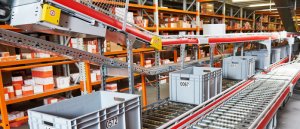
4. Smart inventory policies
A key responsibility of every inventory purchasing team is to negotiate the best price for the items they reorder, so that the sell-on price is as profitable as possible. But striving for the cheapest unit price isn’t always the most cost-effective way to procure a product. Instead, it’s imperative that you understand the nuances of the items being bought and consider factors such as:
Lead times – how quickly is the order needed?
Can a longer lead time be covered by safety stock in order to negotiate a lower unit price? Is buying from a local supplier at a high price necessary in order to replenish stock faster and fulfil important customer orders?
Quantity – is discounted bulk-buying value for money?
Will a supplier’s discount for buying goods in bulk be lost in the costs of lost warehouse space and cash flow problems? Or is the forecasted demand high enough to justify the risk?
Min/max order quantities – what’s the best way to fill-up orders?
What are the best items to add to an order to meet a supplier’s stipulated order quantities?
Businesses are starting to invest in inventory replenishment automation that has the ability to answer these questions. This technology analyses stock levels, forecasts and supplier constraints to provide a level of insight that leads to better purchasing decisions and a better bottom line.
5. Automate your inventory replenishment
The above inventory replenishment strategies are specifically focused on improving profitability. But as you can see, there are lots of bases to cover and you may need a helping hand!
More and more businesses are therefore turning to inventory optimisation software. Systems, such as EazyStock, support inventory replenishment best practice in the following ways:
Ultimately inventory optimisation SaaS solutions help drive down costs in the supply chain and maximise operational efficiency. At the same time they maximise sales opportunities by achieving service level targets and helping maintain high levels of customer satisfaction.
Ace your inventory replenishment policy with EazyStock
If you have inventory replenishment goals for your business and would like to know more about EazyStock schedule a demo and discover how easy it is to optimise your inventory levels and cut costs.
